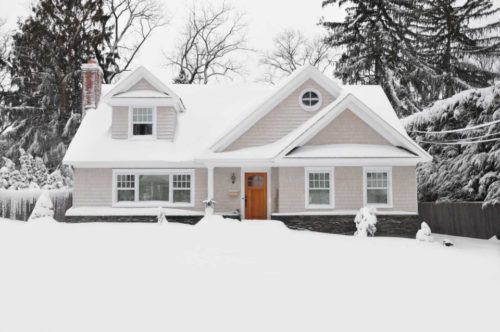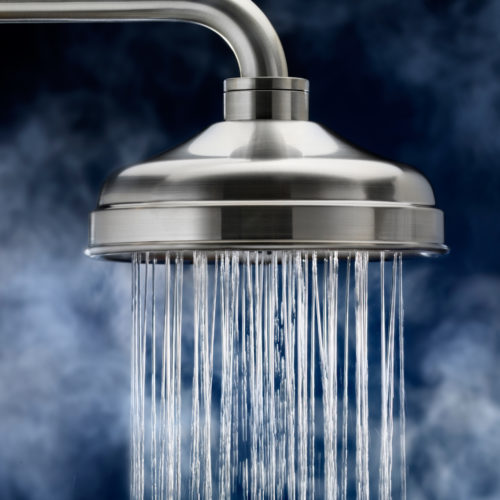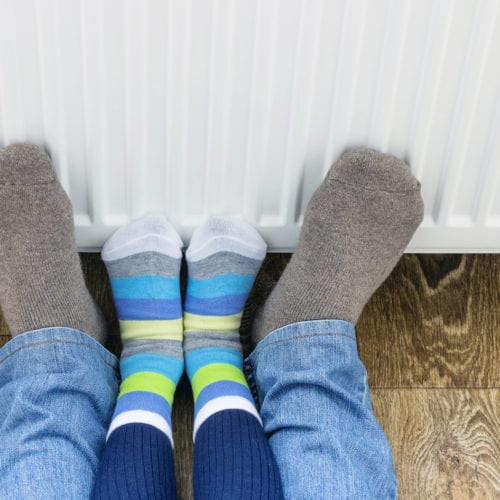Winter Snow Craftman Cape Cod Style Home

Heat Pumps: A Practical Solution for Cold Climates
It’s almost winter in the Northern Hemisphere; time for people to snuggle up with their families (including the four-legged members), cultivate the now-international practice of hygge, and find other ways to deal with the relative lack of sun. The cold is coming, and with it comes the question of how to best heat our homes and businesses without further warming the whole planet.
To date, cities and states in colder climates have focused on decarbonizing building heating systems by promoting high efficiency gas products. But the paradigm-upending year that is 2020 has seen leading states commit to aggressive goals for migrating away from fossil-fuel-based heating and instead toward heat pump alternatives:
- Maine’s 2020 Climate Action Plan, released this month, set a target of 245,000 homes (48% of the housing stock) with heat pumps installed by 2030.
- Massachusetts’ state’s Global Warming Solutions Act (GWSA) Implementation Advisory Committee recently recommended a target of converting one million homes (40% of the housing stock) to heat pumps by 2030. The 2050 Decarbonization Roadmap finalizing these targets is expected to be published later this month.
- Colorado’s 2020 GHG Pollution Reduction Roadmap targets a 60% market share for heat pumps by 2030 and suggests 200,000 homes (12% of the housing stock) could be converted by that time.
Improvements to Heat Pumps for Cold Climates
As electric utilities across North America continue to decarbonize by adding renewable energy sources to their grids, heat pumps have gained popularity as an effective, low-carbon heating solution. These systems use electricity to harness energy from the surrounding air and pump that energy indoors in the form of heat—much like an air conditioner in reverse. These systems can achieve efficiencies three to six times higher than conventional heating technologies.
But despite the clear efficiency and carbon benefits, air source heat pumps have historically been relegated to more moderate climates, such as the Southeastern United States. One reason is that models from the 1980s struggled to operate efficiently (or operate at all) in sub-freezing temperatures.
Cold climates are seeing a resurgent attention on heat pumps, due in part to technological advances that have finally allowed heat pumps to perform in cold temperatures. The key feature allowing sub-freezing performance is an advance in variable speed inverter-driven compressor technology, which wasn’t available in mainstream offerings just 10 years ago.
Leading products are now capable of performing well below -10°F and operating at more than double the efficiency of resistance or gas systems below zero. These aren’t just manufacturer claims: heat pumps have been successfully field tested in Minnesota (which has some of the coldest winters in the Continental United States) and as far north as the Arctic Circle! Other advances in heat pump controls have allowed for a more seamless integration of backup electric resistance systems, which can provide an extra layer of security in extremely cold climates.
Ground source heat pumps (a.k.a. geothermal systems) have long represented the gold standard for zero-carbon heating systems in cold climates. These systems provide unparalleled efficiencies, maintenance savings, and expected lifetimes that make them a smart choice for forward-thinking homebuyers. Companies like Dandelion Energy—an outgrowth of Alphabet’s moonshot program—are continuing to lower installed costs with vertical integration, technological innovation, and new financing models.
But the high costs and installation limitations of these systems mean that they are only part of the solution. Advances in air source heat pump performance are finally providing cold climate cities and states with a lower-cost alternative that can form the backbone of more systemic change.
Be the real power behind the energy transition.
Your donation to RMI turns bold clean energy ideas into real-world solutions right when people and the planet need them most.
A New Industry Standard for Performance in Cold Climates
A core challenge in driving adoption is building confidence among installers in cold climates, many of whom remain skeptical of sub-freezing performance thanks to bad experiences with outdated technology. This has been a challenging barrier to break due to industry testing standards that have failed to keep pace with recent technological advances. In the United States, the AHRI 210/240 testing standard currently used for air source heat pumps doesn’t even test below 17°F. This gives little to no indication of how products compare in sub-zero conditions, or even which can operate below zero at all.
The Canadian Standards Association has been working to fill this knowledge gap since 2015, and in 2019 finally released a draft testing standard that has already been found to provide real-world performance insights “that are not apparent in the AHRI ratings.” The review period for the standard ends this month. Once finalized and adopted by leading manufacturers, the standard should allow installers, policymakers, and homeowners in colder climates to confidently deploy this technology as a cornerstone of our clean energy transition.
The Time Is Now
The availability of adequate testing standards represents a start, rather than a completion, of this work. Consumer and installer perceptions based on older generations of heat pump technology have built up over decades. Memories of chilly homes or unhappy customers during heating season will continue to make installers in colder climates slow to adopt heat pumps as a core offering.
But heat pump technology has changed, and we need to address these outdated perceptions to achieve the rapid scale required to reach our climate goals. Forward-thinking governments are taking note. And soon, the data that installers and consumers need to make smart decisions will be readily available.

